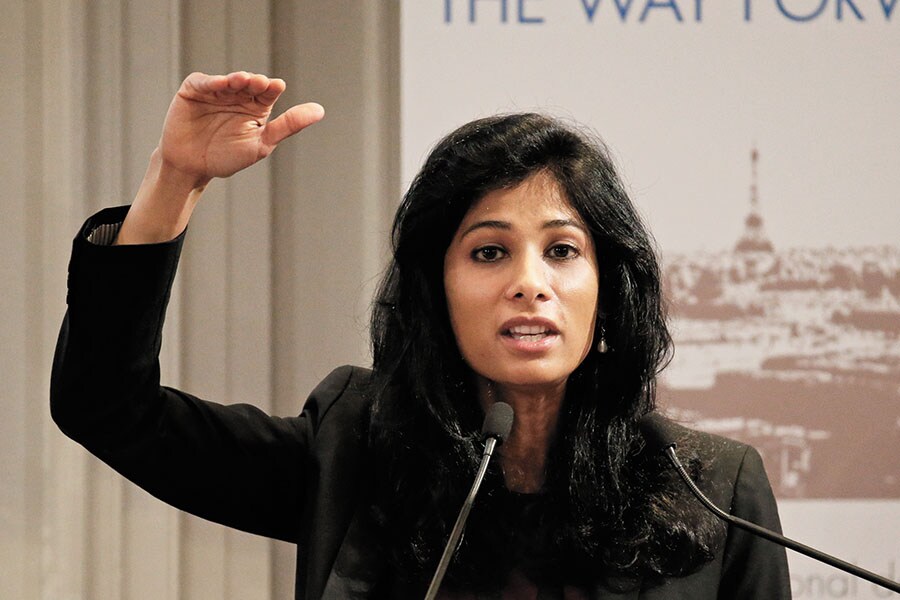
India leads IMF's global outlook downgrade—what happens next?
The organisation estimates India's growth to be 4.8 percent in 2019
 IMF chief economist Gita Gopinath
IMF chief economist Gita GopinathImage: Charles Platiau / Reuters
India contributed as much as 80 percent to the International Monetary Fund’s (IMF) downward revision of global outlook, said IMF chief economist Gita Gopinath during media interviews.
According to the report released at the World Economic Forum in Davos in January, IMF said global growth is projected to rise from an estimated 2.9 percent in 2019 to 3.3 percent in 2020 and 3.4 percent in 2021—a downward revision of 0.1 percentage points for 2019 and 2020, and 0.2 for 2021 compared to the October World Economic Outlook (WEO).
India’s growth is estimated at 4.8 percent in 2019, projected to improve to 5.8 percent in 2020 and 6.5 percent in 2021 (1.2 and 0.9 percentage points lower than the October WEO), supported by monetary and fiscal stimulus as well as subdued oil prices.
Gopinath, in her recent India outings, had indicated that the IMF may have to downward revise India’s outlook due to the economic slowdown in the country. The growth markdown largely reflects a downward revision to India’s projection, where domestic demand has slowed more sharply than expected amid stress in the non-bank financial sector and a decline in credit growth. “When IMF cuts numbers it gets global attention and foreign investors align their risks accordingly. There could be further deceleration in numbers that have been put out. The structural issue is that as a government we do not have any money left, [and] unless disinvestment happens, the government will find it challenging to raise capital,” says Abhimanyu Sofat of IIFL Securities Ltd.
(This story appears in the 30 November, -0001 issue of Forbes India. To visit our Archives, click here.)





